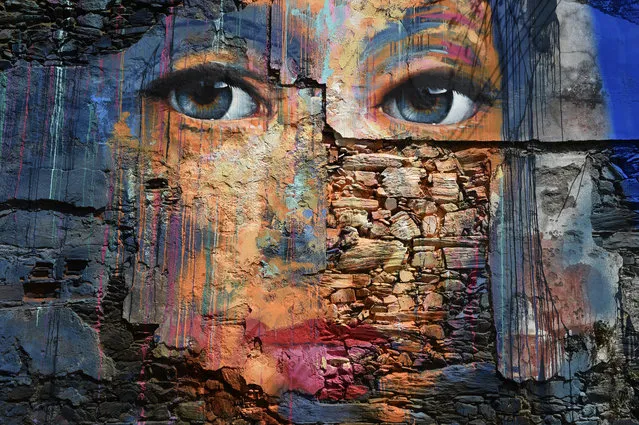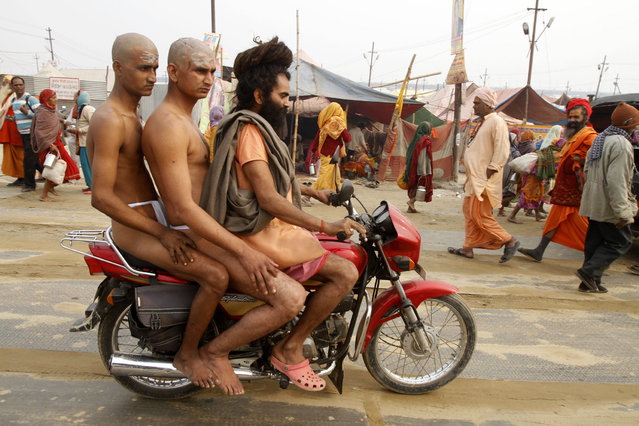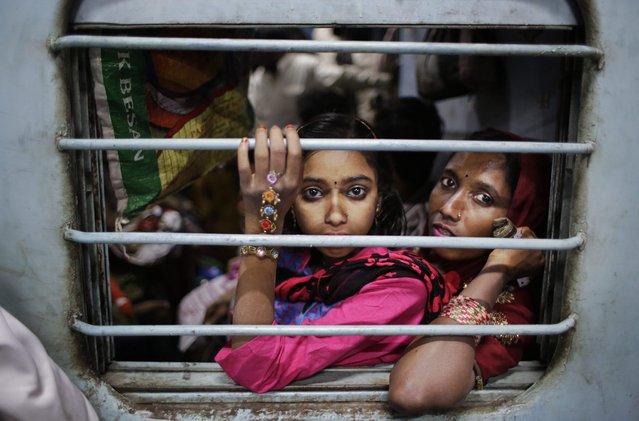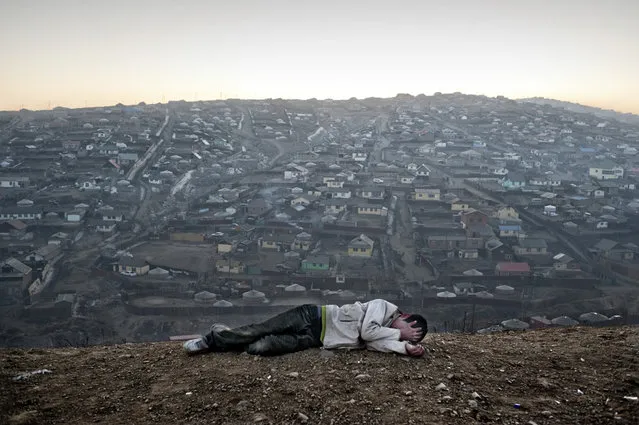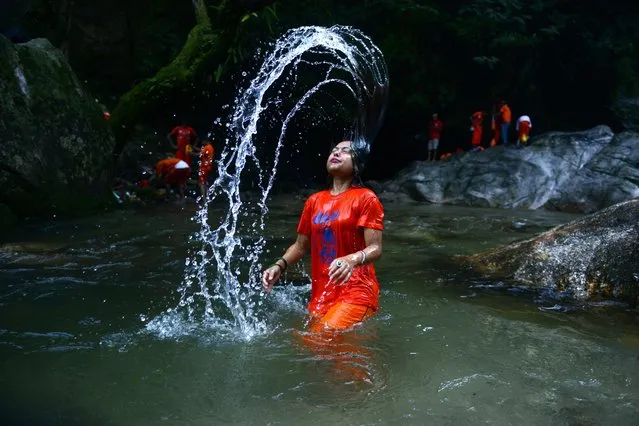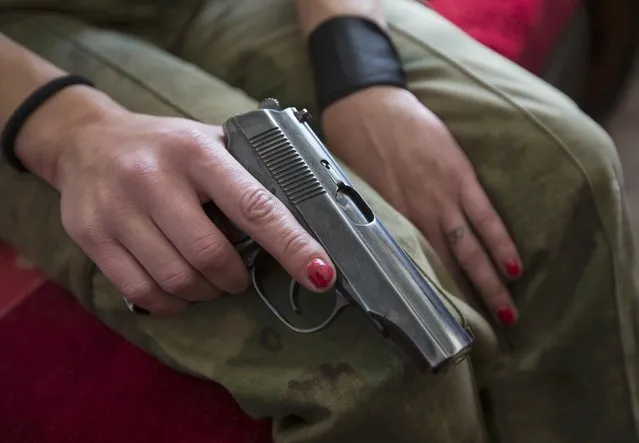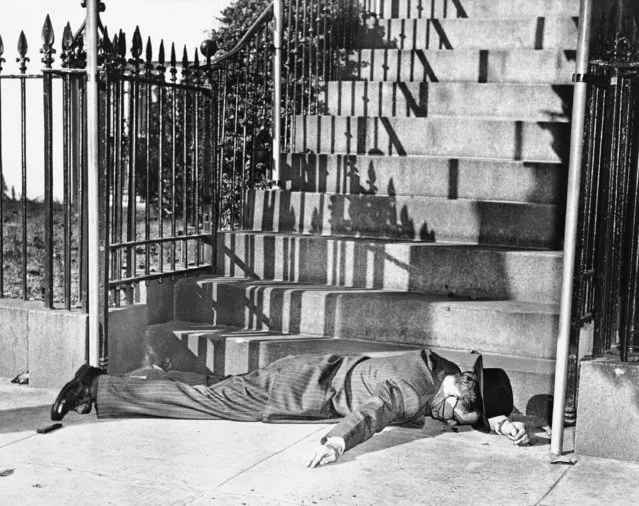
Gunfire was brought to the steps of President Truman's Washington home, Blair House, as two assassins tried to kill the chief executive, November 1, 1950. One of the gunmen, Oscar Collazzo of New York, lay wounded at the bottom of Blair House's front steps after the president's police guard had finished their work, at the cost of one guards' life, Dec. 9, 1950. The second gunman was killed. (Photo by Harvey Georges/AP Photo)
13 Jun 2018 00:03:00,post received
0 comments

